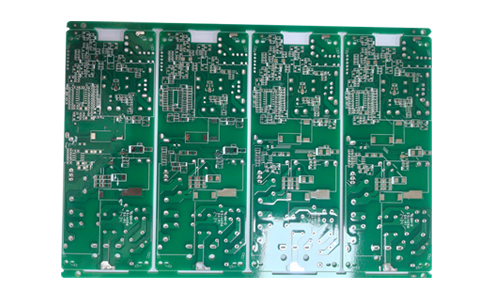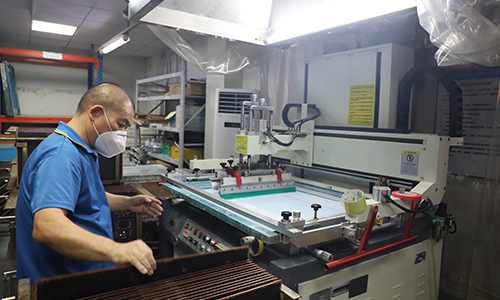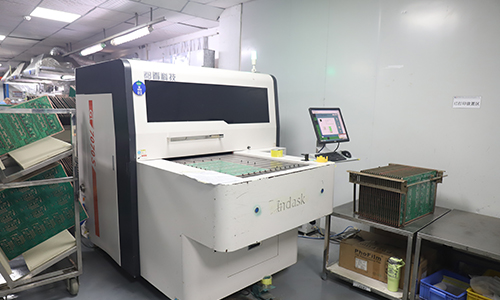
Double-sided tin-sprayed PCB is designed for power management and signal transmission.
Double-Sided Tin-Sprayed Power PCB Product Introduction

Product Overview
Double-sided tin-sprayed PCB is designed for power management and signal transmission. Its double-sided circuit layout and tin-sprayed surface treatment provide good welding performance and durability, suitable for various power supplies and electronic devices.
Product Features
1.Double-sided design
2.Double-sided circuit layout is adopted to facilitate complex circuit connection and improve design flexibility and compactness.
3.Tin-sprayed surface treatment
4.Tin-sprayed (HASL) process is adopted to provide good welding and conductivity, suitable for most welding processes.
5.Good electrical performance
6.Design optimization ensures signal integrity, suitable for applications with high requirements for power and signal quality.
7.Excellent heat dissipation performance
8.Suitable for high-power applications, can effectively reduce the temperature of the circuit board and improve the stability and reliability of the system.
9.Durability
10.High-quality materials are used, with good corrosion resistance and oxidation resistance, suitable for various environmental conditions.
Application Areas
Power management
Suitable for power management systems such as switching power supplies and DC-DC converters.
Industrial equipment
Widely used in industrial control, automation equipment and other fields.
Communication equipment
Suitable for high-frequency communication equipment such as base stations and communication modules.
Consumer electronics
Provide stable power support in high-performance consumer electronics products.
Technical Specifications
| Number of layers | double-sided | Minimum aperture | 0.2 mm |
| Copper thickness | 1 oz | Minimum line width | 0.1 mm |
| Board material | FR-4 KB6160 | Surface treatment | HASL |
| Solder mask color | green oil with white text |
Production Process
1.Design phase
2.Use professional PCB design software for circuit design and layout.
3.Material selection
4.Select the appropriate substrate and copper thickness according to customer needs.
5.Manufacturing phase
6.Perform processes such as photolithography, etching, drilling, and lamination.
7.Surface treatment
8.Use HASL process for surface treatment to ensure good solderability and conductivity.
9.Testing phase
10.Conduct electrical tests and reliability tests to ensure product quality.
11.Delivery phase
12.After completion, pack and ship to ensure that the product reaches the customer safely.
 |
 |
Conclusion
Double-sided tin-sprayed power PCB is an ideal choice for high-performance power solutions and is suitable for a variety of power supplies and electronic devices. With its superior electrical performance, welding ability and durability, it can meet the stringent requirements of modern electronic devices for power supplies.
FAQ
1.Q: How far is your factory from the nearest airport?
A: About 30 kilometers
2.Q: What is your minimum order quantity?
A: One piece is enough to place an order.
3.Q: What are the common welding issues encountered in the manufacturing of power PCB, and how can they be resolved?
A: Common welding issues include disturbed solder joints, cold solder, solder bridging, and insufficient wetting of the pads. These can be resolved by optimizing the temperature profiles of reflow or wave soldering, using high-quality solder, and ensuring appropriate pad size during the design phase.
4.Q: How long does it generally take to deliver HDI high-frequency PCB?
A: We have raw material inventory (such as RO4350B, RO4003C, etc.), and our fastest delivery time can be 3-5 days.